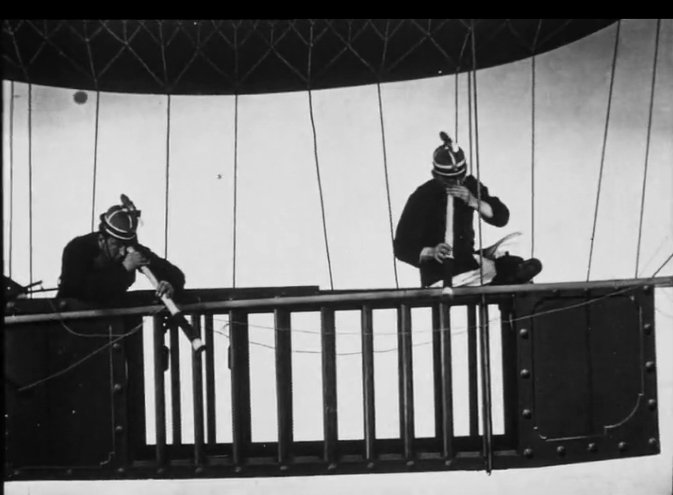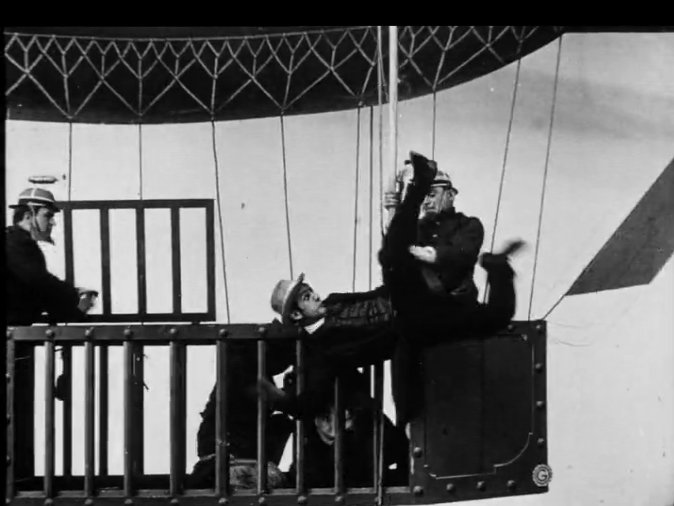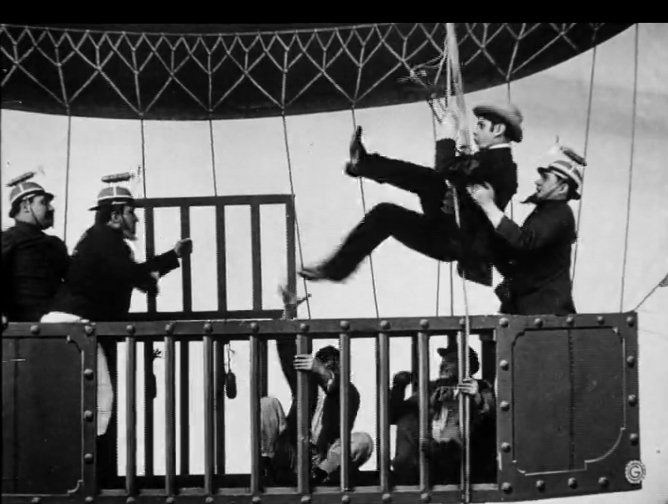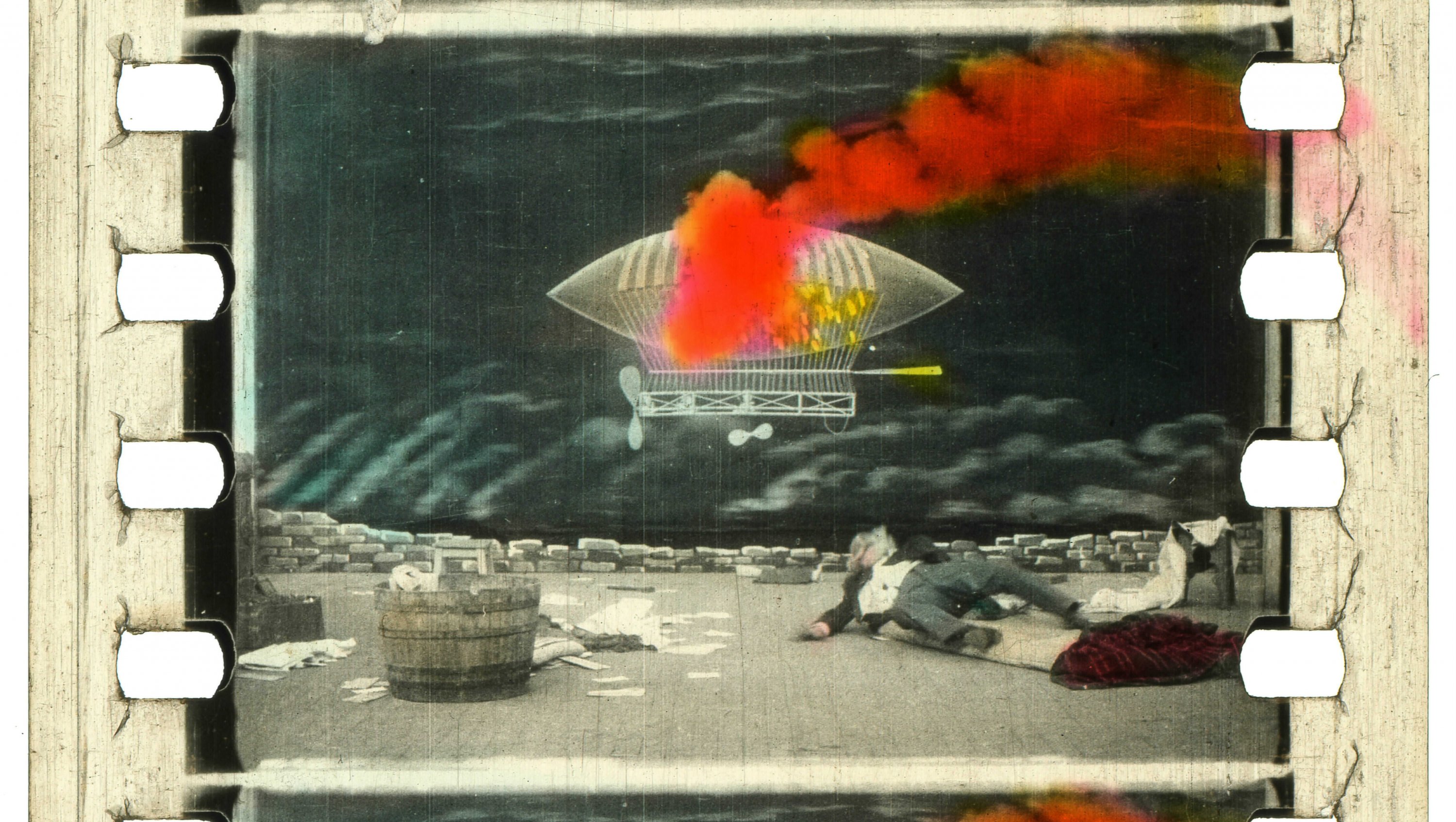Set of short films (EYE)
The Moreau Brothers’ Aerostable
(L'aérostable des frères Moreau)
France 1913, 4'
Director: unknown
Producer: Gaumont
DCP
Source: EYE Filmmuseum
French aviation pioneers, brothers Albert and André Moreau, demonstrate a device allowing for maintaining balance in an airplane. Footage of the machine standing on the ground merges with spectacular shots taken from inside the cabin during takeoff. The whole is complemented by shots of an airplane in flight.
The film was restored from fragments of nitro tape found in the Desmet collection.
By Katarzyna Wajda
Police in the Year 2000
(La police en l'an 2000)
France 1910, 5'
Director: unknown
Cast: Marcel Fabre, Eugene Breon, Clement Mégé
Producer: Gaumont
DCP (SD), B&W
Source: EYE Filmmuseum
Before the collective imagination became dominated by superheroes, Gaumont sent police officers to roam the skies. The main characters in the film are a group of law enforcers, typical of slapstick comedies. However, the film shows how their work would look in the new millennium: flying a blimp over the city, granting them the perfect vantage point, and catching criminals with a special grabbing device. Thanks to this, all sorts of thieves and scoundrels are put behind bars.
This futuristic comedy presents an optimistic view of future technology, but decades later, well beyond 2000, it may evoke associations with surveillance tools that ensure security while also serving as a means of control.
By Marta Stańczyk
The Inventor Crazybrains and His Wonderful Airship
(Le dirigeable fantastique)
France 1906, 3'
Director and cast: Georges Méliès
Producer: Star-Film
DCP
Source: EYE Filmmuseum
An inventor is developing a design for an airship. He then dances for joy before falling asleep. Then, extraordinary guests appear in his workshop, and the sketched ship floats into the air...
An image combining elements of Georges Méliès’ favorite and most characteristic genres: science fiction film, fantasy, and fairy tale. Here, the director employs his signature cinematic tricks, and the use of the dream motif marks this remarkable tale as an early example of oneiric cinema. The film – typical of the French master’s productions – is hand-colored.
By Katarzyna Wajda
music: Voices of the Cosmos






